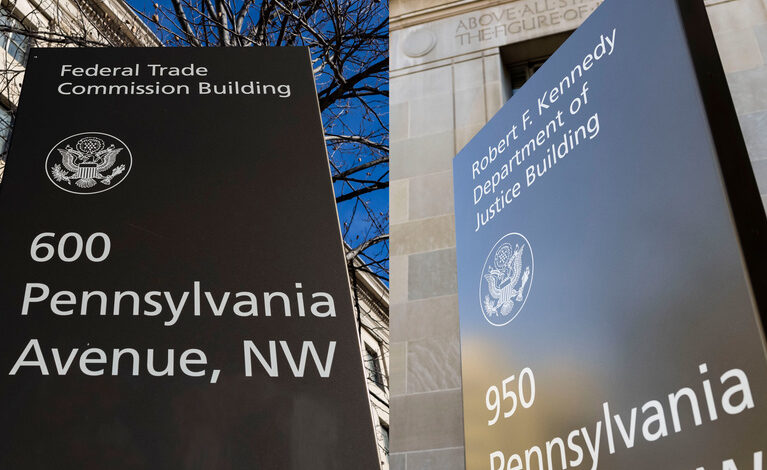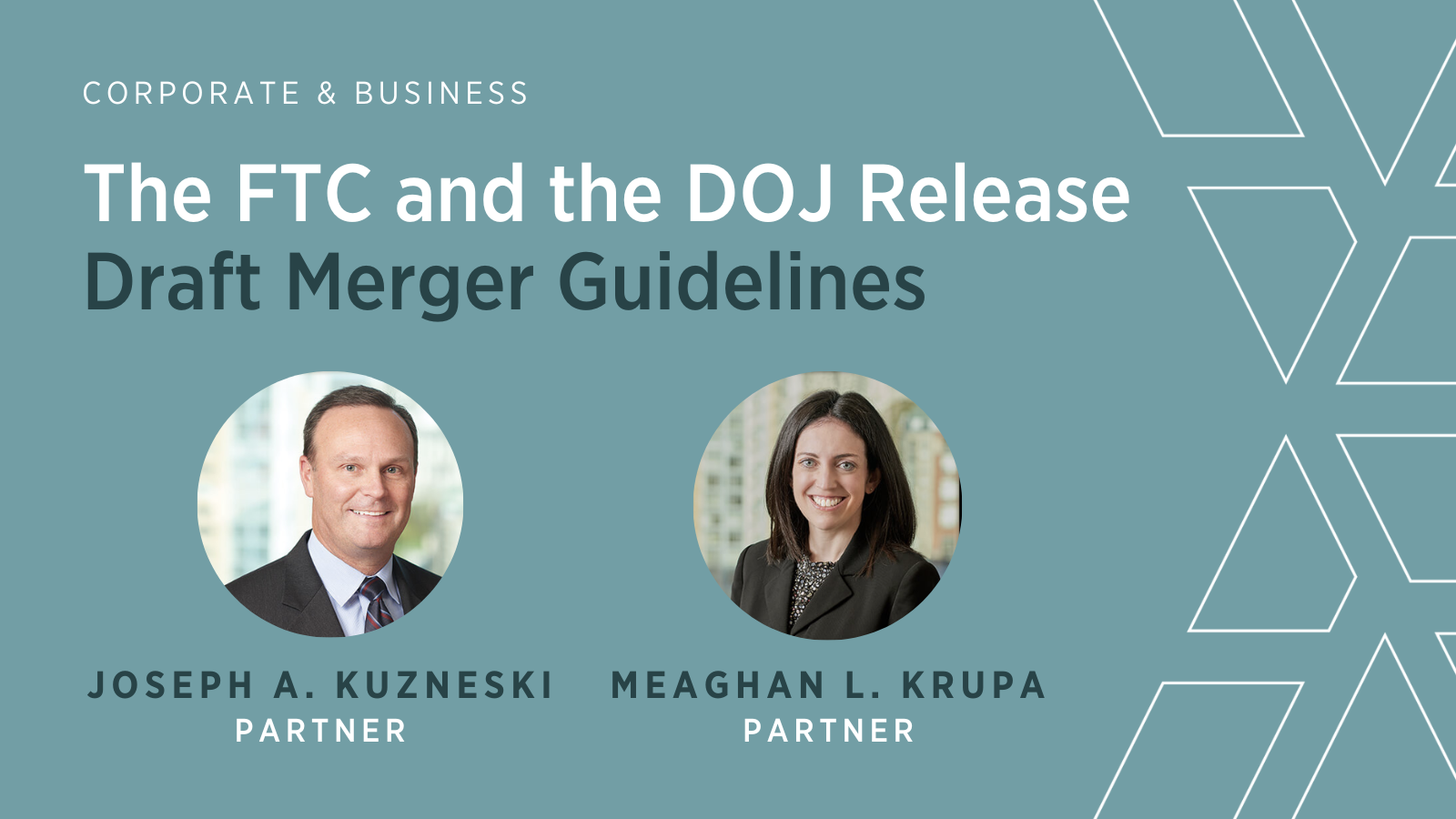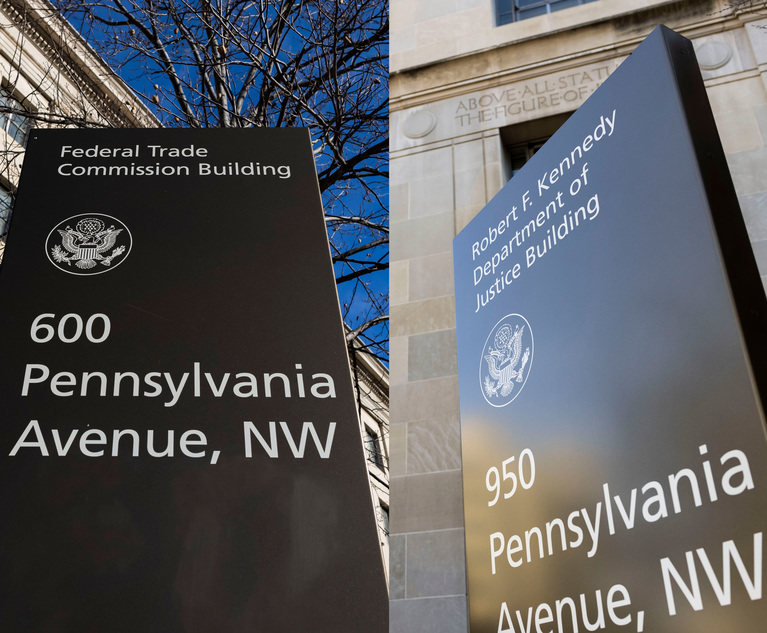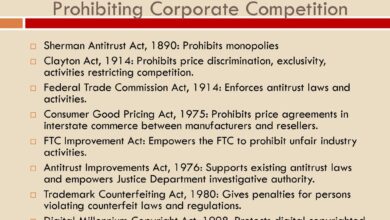
FTC DOJ Merger Guidelines Healthcare
FTC DOJ merger guidelines healthcare: Navigating the complex world of healthcare mergers and acquisitions is a tricky business, and understanding the guidelines set forth by the Federal Trade Commission (FTC) and the Department of Justice (DOJ) is crucial. These guidelines aren’t just legal mumbo-jumbo; they’re the gatekeepers determining whether a proposed merger benefits or harms consumers. We’re diving into the nitty-gritty, exploring the historical context, key provisions, and the ongoing challenges faced by regulators in keeping up with the ever-evolving healthcare landscape.
Get ready for a deep dive!
This post will unpack the intricacies of these guidelines, explaining how they impact hospital consolidations, drug pricing, and the overall competitive dynamics within the healthcare industry. We’ll look at real-world examples of mergers that have been challenged or approved, analyzing the factors that led to those decisions. We’ll also explore the role of innovation and efficiency in merger reviews and discuss the emerging trends shaping the future of healthcare consolidation.
Historical Context of FTC and DOJ Merger Guidelines in Healthcare

Source: hinckleyallen.com
The intersection of antitrust law and the healthcare industry has been a dynamic and evolving landscape, shaped by significant shifts in the market and the agencies’ interpretations of the law. Understanding the historical context of the Federal Trade Commission (FTC) and Department of Justice (DOJ) merger guidelines in healthcare is crucial for comprehending current enforcement actions and anticipating future trends.
This evolution reflects not only changes in the guidelines themselves but also the agencies’ evolving understanding of competitive dynamics within the complex healthcare sector.The application of merger guidelines to healthcare has seen considerable changes over time, reflecting the unique characteristics of the industry. Early applications often focused on straightforward market share analysis, but the increasing complexity of healthcare markets—including the rise of managed care, vertical integration, and specialized services—necessitated a more nuanced approach.
The agencies have adapted their analytical frameworks to account for these changes, leading to a more sophisticated assessment of potential anti-competitive effects.
Timeline of Significant Changes and Updates to Merger Guidelines Impacting Healthcare
The FTC and DOJ have periodically revised their Horizontal Merger Guidelines, which are the primary framework for evaluating mergers. While there isn’t a separate set of guidelines solely for healthcare, the application of these general guidelines has evolved significantly within the healthcare context. Key periods of change reflect a growing understanding of the unique competitive dynamics within the healthcare sector.
For example, the 1992 and 1997 revisions incorporated more sophisticated analyses of market definition and potential for coordinated effects, relevant considerations in highly concentrated healthcare markets. Subsequent updates have continued to refine these approaches, acknowledging the influence of factors such as physician networks, insurance plans, and the increasing prevalence of specialized services. The agencies’ increasing focus on the potential for mergers to stifle innovation and reduce quality of care also marks a significant shift.
The FTC and DOJ merger guidelines for healthcare are crucial, especially considering the impact on access to quality care. The recent news about actress Monali Thakur being hospitalized after struggling to breathe, as detailed in this article monali thakur hospitalised after struggling to breathe how to prevent respiratory diseases , highlights the importance of preventative healthcare. This underscores the need for strong regulatory oversight to ensure fair pricing and accessible treatment for all, a key aspect of the FTC and DOJ’s guidelines.
Examples of Past Mergers Challenged or Approved Under the Guidelines
Several high-profile healthcare mergers illustrate the application and evolution of the merger guidelines. The FTC’s challenge of the proposed merger between two large hospital systems in a specific geographic market, ultimately resulting in a settlement that included divestitures, exemplifies the agencies’ concern about reduced competition and increased prices. Conversely, the approval of a merger between two pharmaceutical companies, despite some market overlap, may reflect an assessment that the potential benefits of increased research and development outweighed any anti-competitive concerns.
These contrasting outcomes highlight the case-by-case nature of merger review and the nuanced considerations involved. The specific details of each case, including market definition, the presence of close substitutes, and the potential for unilateral or coordinated effects, play a significant role in the agencies’ decision-making process.
Evolution of the Agencies’ Enforcement Approaches Regarding Healthcare Mergers
The agencies’ enforcement approaches have become increasingly sophisticated and proactive. Early enforcement focused heavily on market share analysis and the potential for price increases. However, more recent enforcement actions demonstrate a greater emphasis on other potential anti-competitive effects, such as reduced quality of care, stifled innovation, and decreased patient choice. The agencies have also become more adept at analyzing complex market structures, including the impact of vertical integration and the role of managed care organizations.
This shift reflects a growing recognition that the traditional antitrust framework needs to be adapted to address the unique challenges posed by the healthcare industry. Furthermore, the agencies have increased their use of data analysis and econometric modeling to assess the potential competitive effects of mergers, leading to a more evidence-based approach to enforcement.
Key Provisions of the Guidelines Relevant to Healthcare Mergers
The FTC and DOJ Merger Guidelines, while broadly applicable, contain specific provisions crucial for evaluating mergers within the healthcare sector. These provisions recognize the unique characteristics of healthcare markets, such as the presence of significant information asymmetry, complex payment systems, and the inherent public interest in access to quality and affordable care. Understanding these provisions is key to navigating the complexities of healthcare mergers and avoiding potential antitrust challenges.The guidelines employ a detailed framework to analyze potential anticompetitive effects, moving beyond simple market share calculations to consider factors specific to healthcare.
This deeper dive necessitates a nuanced understanding of the relevant markets, the competitive dynamics within those markets, and the potential impact of the merger on patients, providers, and the broader healthcare system.
Market Definition in Healthcare Mergers
Defining the relevant market is paramount in any merger review, but this process is particularly intricate in healthcare. The agencies consider both the product market (e.g., specific types of healthcare services, such as cardiology or oncology) and the geographic market (e.g., a specific city, county, or region). Factors influencing geographic market definition include patient travel patterns, the availability of substitute services, and the presence of referral networks.
For instance, a merger between two large hospital systems in a rural area might be scrutinized more closely than a similar merger in a densely populated urban center with numerous alternative providers. The agencies may use sophisticated econometric techniques and patient flow data to determine the relevant geographic market, focusing on the area where patients realistically have choices among providers.
Assessment of Anticompetitive Effects
The guidelines emphasize the potential for anticompetitive effects resulting from reduced competition, such as higher prices, reduced quality, and decreased innovation. In healthcare, this analysis often involves assessing the impact on both provider and payer bargaining power. For example, a merger between two dominant hospital systems could reduce the bargaining power of health insurers, potentially leading to higher reimbursement rates and ultimately higher costs for consumers.
Similarly, mergers among pharmaceutical companies are analyzed for their potential to stifle competition in drug development and pricing. The agencies look at various factors, including the concentration of market share post-merger, the potential for coordinated effects (e.g., tacit collusion), and the presence of barriers to entry for new competitors.
Evidence Considered in Merger Evaluations
The FTC and DOJ employ a wide range of evidence when evaluating healthcare mergers. Market share data provides a starting point, but it’s only one piece of the puzzle. The agencies also consider patient flow data to understand the actual competitive interactions between providers. This data can reveal patterns of patient referrals and choices, illuminating the true competitive landscape.
Provider network analysis is critical, especially for mergers involving health insurance companies or large hospital systems. The agencies assess the potential impact on the breadth and depth of provider networks, considering whether the merger will lead to a reduction in the choice of providers available to patients. Furthermore, they may consider evidence regarding the potential for reduced innovation, the impact on quality of care, and the overall effect on patient access to healthcare services.
The agencies may also review internal documents of the merging parties to assess their strategic plans and potential anticompetitive intentions.
Analyzing Market Definition and Concentration in Healthcare: Ftc Doj Merger Guidelines Healthcare
Defining relevant markets and assessing market concentration are crucial steps in the FTC and DOJ’s review of healthcare mergers. These guidelines help determine whether a merger is likely to substantially lessen competition, ultimately impacting patient care and healthcare costs. Understanding these processes is essential for navigating the complexities of healthcare mergers and acquisitions.
Defining Relevant Markets in Healthcare
The FTC and DOJ employ a rigorous process to define the relevant market for a healthcare merger. This involves identifying both the product market (the types of healthcare services) and the geographic market (the area where competition occurs). A hypothetical scenario can illustrate this. Imagine a proposed merger between two large hospital systems, System A and System B, both offering a range of services including cardiac surgery, oncology, and general surgery.
To define the product market, the agencies would analyze whether these services are considered distinct or substitutable. For instance, if patients seeking cardiac surgery are unlikely to substitute it with general surgery, cardiac surgery would be a separate product market. The geographic market would be defined by examining patient travel patterns and the presence of competing hospitals. If patients primarily travel within a 30-mile radius for cardiac surgery, the geographic market would likely encompass that area.
The agencies would consider factors like transportation costs, patient preferences, and the availability of substitute services in determining the relevant market boundaries.
Comparison of Market Definition Approaches in Healthcare Merger Reviews
Several approaches are used to define markets in healthcare merger reviews. The agencies often use the hypothetical monopolist test, which assesses whether a hypothetical firm controlling the proposed merged entity could profitably impose a small but significant and non-transitory increase in price (SSNIP). If so, the market is deemed properly defined. Other approaches include examining the characteristics of the products and services offered, patient flow data, and the presence of substitutes.
The choice of approach depends on the specific facts of the case and the nature of the healthcare services involved. The use of sophisticated econometric modeling is becoming increasingly common to analyze patient choice and the substitutability of healthcare services.
Calculating and Interpreting Market Concentration in Healthcare Mergers
Market concentration is calculated using measures such as the Herfindahl-Hirschman Index (HHI), which sums the squares of the market shares of all firms in a relevant market. A higher HHI indicates greater concentration. For example, a merger resulting in an HHI above a certain threshold (generally 2500) may trigger more scrutiny. The change in HHI resulting from the merger (ΔHHI) is also considered.
A significant increase in HHI post-merger (generally above 200) raises concerns about reduced competition.
| Provider Name | Market Share (%) | Number of Hospitals | Geographic Area |
|---|---|---|---|
| Hospital System A | 40 | 5 | County X |
| Hospital System B | 30 | 3 | County X |
| Community Hospital C | 15 | 1 | County X |
| Regional Medical Center D | 15 | 2 | County X |
In this hypothetical example, the pre-merger HHI is calculated as (40² + 30² + 15² + 15²) = 2950. If System A and System B merge, the post-merger HHI would be (70² + 15² + 15²) = 5350. The ΔHHI is 2400, suggesting a significant increase in market concentration. This large increase would likely warrant further investigation by the FTC and DOJ to determine whether the merger is likely to substantially lessen competition.
Assessing Competitive Effects of Healthcare Mergers
The FTC and DOJ scrutinize healthcare mergers intensely, focusing on the potential for anticompetitive effects that could harm patients and the healthcare system. Understanding how these agencies assess competitive effects is crucial for anyone involved in such transactions. This involves a multifaceted analysis going beyond simple market share calculations.The agencies consider a range of potential anticompetitive effects stemming from healthcare mergers.
These effects are not mutually exclusive and can occur simultaneously.
Types of Anticompetitive Effects
The FTC and DOJ examine several ways mergers could stifle competition. Price increases are a primary concern; a reduction in the number of competing providers can lead to higher prices for services, medications, and insurance. Reduced quality of care is another key area of focus. Mergers might incentivize cost-cutting measures that compromise patient care, such as reduced staffing or less access to advanced technologies.
Finally, limited innovation is a significant worry. Reduced competition can stifle the development of new treatments, technologies, and more efficient healthcare delivery models. For example, a merger between two pharmaceutical companies specializing in a particular type of cancer treatment might lead to less investment in developing alternative therapies.
Methodologies for Predicting Competitive Effects
Several methodologies are employed to predict the competitive effects of a merger. One common approach is the hypothetical monopolist test, which assesses whether a hypothetical single firm controlling the merged entity would have the incentive and ability to raise prices or reduce output. This test often involves detailed market definition and analysis of the merged firm’s market power.
The FTC and DOJ merger guidelines in healthcare are intensely scrutinized, especially regarding potential impacts on consumer choice and pricing. This brings to mind how individual needs vary, like the fascinating discussion in this article: are women and men receptive of different types of food and game changing superfoods for women , which highlights the importance of personalized approaches.
Understanding diverse needs, whether in food or healthcare access, is crucial for effective regulation and fair market practices.
For instance, in a hypothetical merger between two large hospital systems in a geographically limited area, the agencies would analyze whether the combined entity could unilaterally increase prices for specific procedures without losing significant market share to alternative providers.Another approach is the Upward Pricing Pressure (UPP) test, which examines whether the merger is likely to increase prices. This involves assessing the merging firms’ market power, the level of competition remaining in the market, and the likely response of rivals.
The FTC and DOJ merger guidelines for healthcare are already complex, navigating antitrust concerns in a rapidly evolving industry. The recent Supreme Court decision, as reported in this article scotus overturns chevron doctrine healthcare , will undoubtedly add another layer of uncertainty. This shift in how courts interpret agency regulations will likely impact how the FTC and DOJ apply their healthcare merger guidelines going forward, potentially leading to more litigation.
The UPP test often involves econometric modeling to predict the likely price effects of the merger. Consider a merger between two large pharmacy benefit managers (PBMs). The agencies would likely use UPP analysis to determine if the merger would give the combined entity leverage to negotiate lower rebates from pharmaceutical manufacturers, ultimately leading to higher drug prices for consumers.
Potential Remedies for Anticompetitive Concerns
If the agencies determine that a healthcare merger is likely to result in anticompetitive effects, they may impose several remedies to mitigate these concerns.
- Divestiture: The merging parties may be required to sell off certain assets, such as hospitals, clinics, or specific business lines, to maintain competition. This ensures that a substantial portion of the merged entity’s market share remains in the hands of independent competitors.
- Behavioral Remedies: These remedies involve restrictions on the merged entity’s conduct, such as limitations on price increases or requirements to maintain certain levels of service quality. For example, the merged entity might be prohibited from raising prices above a certain percentage for a specified period.
- Structural Remedies: These remedies involve changes to the structure of the merged entity to address anticompetitive concerns, such as divestiture of assets or creation of independent entities.
- Monetary Penalties: In some cases, the agencies may impose significant monetary penalties for violations of antitrust laws. This serves as a deterrent to future anticompetitive behavior.
The Role of Innovation and Efficiency in Merger Review

Source: law.com
The FTC and DOJ’s review of healthcare mergers isn’t solely focused on potential anti-competitive effects. They also consider whether a merger might generate efficiencies that could benefit consumers. However, the bar for demonstrating these efficiencies is high, and the agencies carefully scrutinize claims made by merging parties. The process involves a complex balancing act between potential anti-competitive harm and the possibility of pro-competitive gains through innovation and cost savings.The agencies acknowledge that mergers can sometimes lead to efficiencies, such as improved coordination, economies of scale, and technological advancements.
These efficiencies can translate into lower prices, higher quality care, or the introduction of new products and services. However, the claimed efficiencies must be substantial, verifiable, and likely to pass through to consumers to offset any potential anti-competitive effects. Simply stating that efficiencies will result is insufficient; the merging parties must provide concrete evidence to support their claims.
Efficiencies Considered by the FTC and DOJ, Ftc doj merger guidelines healthcare
The FTC and DOJ evaluate various types of efficiencies, including those related to cost reductions (e.g., eliminating redundant administrative functions, negotiating better prices with suppliers), improved coordination of care (e.g., reduced hospital readmissions, improved patient outcomes), and innovation (e.g., accelerated development of new drugs or medical devices). The agencies require detailed analysis of these claimed efficiencies, including specific plans for achieving them, timelines, and quantifiable metrics.
They also examine whether the efficiencies are merger-specific, meaning they would not be achievable through other means such as internal restructuring or strategic partnerships.
Examples of Efficiency Arguments
Merging hospital systems might argue that combining their operations will allow them to invest in advanced medical technology that would be unaffordable for either system individually. This investment could lead to improved patient care and reduced wait times, representing a pro-competitive benefit. Pharmaceutical companies might claim that merging will allow them to combine research and development capabilities, leading to the faster development of new drugs or treatments.
In both cases, the burden of proof rests on the merging parties to demonstrate that these efficiencies are likely to materialize and are substantial enough to outweigh any potential harm to competition.
Challenges in Quantifying and Verifying Efficiency Claims
Quantifying and verifying efficiency claims in healthcare mergers is notoriously difficult. The complexity of healthcare systems, the lack of readily available data, and the difficulty in predicting future outcomes make it challenging to accurately assess the potential impact of mergers on efficiency. Furthermore, it is difficult to isolate the effect of a merger from other factors that could affect costs and quality of care.
For example, a decrease in hospital readmissions after a merger might be attributed to the merger’s efficiencies, but it could also be due to broader industry trends or changes in reimbursement policies. This uncertainty necessitates a rigorous review process by the FTC and DOJ, often involving economic modeling and expert testimony. The agencies may require detailed financial projections, operational plans, and independent expert analysis to evaluate the credibility of efficiency claims.
Emerging Trends and Challenges in Healthcare Merger Enforcement
The healthcare industry is undergoing a period of rapid transformation, driven by technological advancements, evolving payment models, and a growing emphasis on value-based care. This dynamic environment presents both opportunities and significant challenges for antitrust enforcement agencies like the FTC and DOJ as they assess the competitive implications of healthcare mergers. Increased consolidation, fueled by these trends, necessitates a nuanced approach to merger review that considers the complexities of modern healthcare delivery.The increasing consolidation of healthcare providers, particularly through mergers and acquisitions, is a defining trend shaping the competitive landscape.
This consolidation manifests in various forms, including hospital mergers, physician practice acquisitions by larger hospital systems, and the integration of health insurance companies. These mergers can lead to reduced competition, potentially resulting in higher prices, decreased quality of care, and limited innovation. Conversely, some argue that consolidation can lead to efficiencies and improved care coordination. The challenge lies in accurately weighing these competing effects.
Examples of Recent FTC and DOJ Enforcement Actions
The FTC and DOJ have actively pursued enforcement actions against healthcare mergers they deem anti-competitive. For instance, the FTC challenged the merger of two large hospital systems in a specific geographic market, arguing that the combination would substantially lessen competition, leading to higher prices for patients. The agencies presented evidence demonstrating a lack of sufficient alternative providers within the relevant market, leading to a successful challenge and prevention of the merger.
In another case, the DOJ successfully blocked the acquisition of a large physician practice by a major hospital system, citing concerns about reduced competition in specialized medical services. These cases highlight the agencies’ commitment to scrutinizing healthcare mergers to protect consumers from anti-competitive practices. The specifics of these cases, including market definitions and the evidence presented, are available in public records from the FTC and DOJ websites.
Challenges in Applying Merger Guidelines to Evolving Healthcare Markets
Applying the traditional merger guidelines to the rapidly evolving healthcare market presents significant challenges. The rise of telehealth, for example, has blurred geographical market boundaries, making it more difficult to define the relevant market for antitrust analysis. A hospital system’s acquisition of a telehealth company might not appear anti-competitive based on traditional geographic market definitions, but could substantially lessen competition in a broader, digitally defined market.
Similarly, the shift towards value-based care, where providers are reimbursed based on the quality and cost-effectiveness of care, complicates the assessment of competitive effects. Traditional measures of competition, such as price, may become less relevant in a system that prioritizes quality and outcomes. The agencies must adapt their analytical frameworks to account for these new realities, requiring a more sophisticated understanding of healthcare economics and market dynamics.
For example, the FTC might need to consider alternative metrics, such as patient access or quality of care, in addition to price, when evaluating the competitive effects of a merger in a value-based care environment. This requires close collaboration with healthcare economists and other experts to develop more robust analytical tools.
End of Discussion
Understanding the FTC and DOJ merger guidelines for healthcare is no walk in the park, but it’s essential for anyone involved in, or affected by, healthcare mergers. From the historical context to the emerging challenges, the guidelines are a constantly evolving set of rules aimed at protecting competition and ultimately, patients. By understanding the key provisions, market analysis techniques, and potential anti-competitive effects, stakeholders can better navigate this complex regulatory landscape.
The ongoing evolution of healthcare, particularly with telehealth and value-based care, will continue to test the limits of these guidelines, making ongoing vigilance a necessity.
Essential Questionnaire
What happens if a merger is deemed anti-competitive?
The FTC or DOJ can sue to block the merger entirely, or they may require the merging companies to make concessions, such as divesting assets or altering their business practices, to address the anti-competitive concerns.
How long does the FTC/DOJ review process typically take?
The review process can vary, but it often takes several months, sometimes even longer, depending on the complexity of the merger and the amount of information the agencies need to gather and analyze.
Can a merger be appealed after the FTC or DOJ makes a decision?
Yes, decisions by the FTC or DOJ can be appealed in federal court. This is a lengthy and complex process.
What role do state attorneys general play in healthcare merger reviews?
State attorneys general can also investigate and challenge mergers, often working in conjunction with or independently of the FTC and DOJ.





